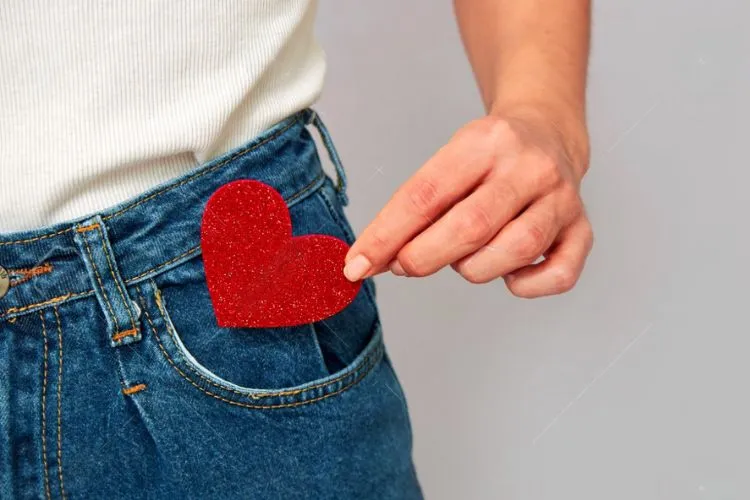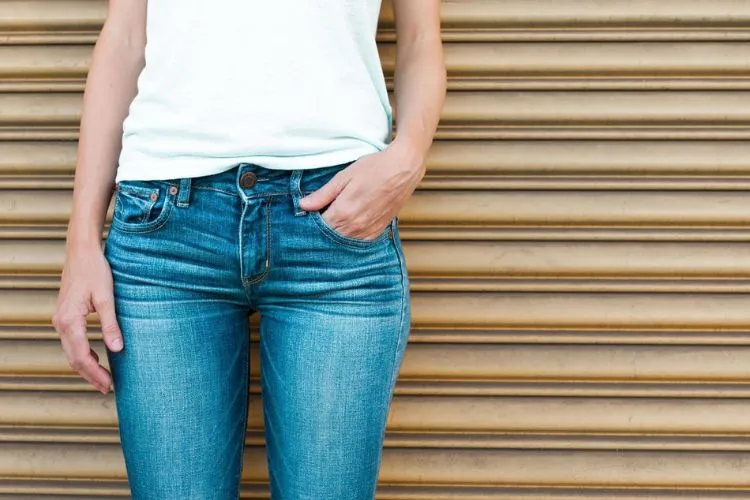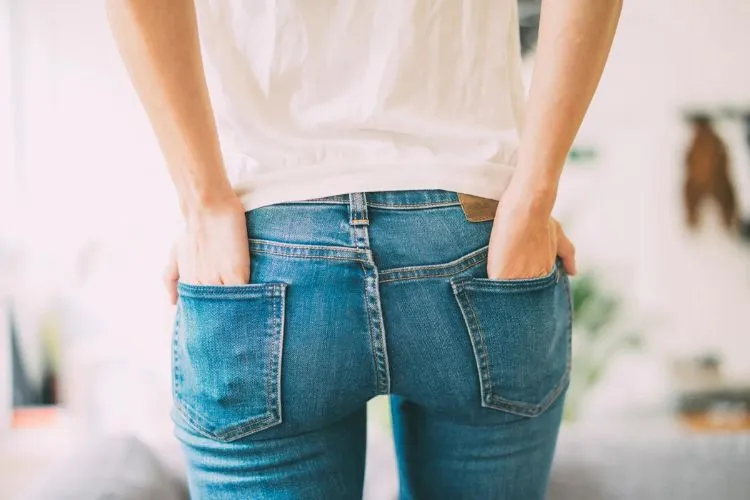The struggle is real when it comes to women finding jeans with adequately sized pockets. This issue has puzzled and frustrated many.
But, do you know why do girls jeans have small pockets in most cases?
Through this article, we’ll dive into the reasons why girls’ jeans come with such small pockets, considering historical backgrounds, the fashion industry’s impact, economic factors, and modern demands for functionality.
We’ll also explore user experiences and answer some frequently asked questions on the topic.

Why Do Girls Jeans Have Small Pockets?
The history of pockets in clothing stretches back centuries. In the 17th century, both genders wore garments with negligible or no pockets at all.
Women often carried essential items in separate pouches tied around their waist, hidden under layers of clothing.
As fashion evolved, pockets re-emerged in the 19th century but were more ornamental than practical in women’s attire. This reflected the societal view of women having less need for functional clothing, prioritizing aesthetics instead.
Men’s clothing, contrastingly, evolved to include more functional pockets, aligning with their societal roles and perceived need for practicality. This divergence in fashion evolution set the stage for the ongoing discrepancies in pocket sizes between men’s and women’s garments.
The Fashion Industry’s Influence
The influence of the fashion industry cannot be overstated. Designers and manufacturers often prioritize form over function, crafting silhouettes that are deemed aesthetically pleasing.
This trend towards slim-fit and streamlined shapes has left little room for functional pockets, under the assumption that they may disrupt the garment’s silhouette.
The Role of Accessories
Handbags and purses come into play as fashion’s solution to the lack of pockets. This marketing strategy encourages consumers to purchase these supplementary items.
It subtly reinforces the idea that women do not need functional pockets because they have other options to carry their essentials.
Pro Tip: When shopping for jeans, look for brands that focus on practicality alongside style. Some brands have begun to acknowledge the demand for functional pockets in women’s clothing and have adapted their designs accordingly.
Economic Factors
The cost of fabric and manufacturing plays a role in the design decisions around pocket sizes. Larger pockets require more material and may add to the complexity of the manufacturing process, potentially increasing costs.

Additionally, the price disparity between men’s and women’s clothing could encourage manufacturers to cut corners where they believe they can, such as reducing pocket size.
Modern Demand for Functionality
There’s been a noticeable shift towards functionality and comfort in women’s fashion in recent years. Consumers are more vocal about their needs, leading to a growing demand for practical features like larger pockets.
Social media and consumer campaigns have amplified these voices, pushing some brands to reconsider their designs.
Key Note: There are now brands that market their products emphasizing the functional aspects of women’s jeans, including larger pockets. These brands have received positive feedback, showing a clear consumer preference for practicality.
User Experience and Feedback
Many women express frustration over the lack of functional pockets in their clothing. This issue extends beyond mere inconvenience, affecting how women interact with their environment and carry their personal items.
Social media platforms serve as a powerful outlet for sharing these experiences and rallying for change. Positive changes in the industry often stem from retailers responding to this collective call to action.
Case Studies: Brands with Best Practice
Several progressive brands have responded to the need for functional pockets in women’s jeans, earning accolades for their inclusive designs. Madewell, for example, has been celebrated for its “pocket equality” in jeans, providing deeper pockets for women.
Consumer response has been fervent, with positive reviews praising the brand’s fusion of style and practicality. Similarly, brands like Pockets for Women focus on offering jeans designed with large pockets, an approach that has resonated with customers, reflected in their strong approval and repeat purchases.
These brands exemplify how prioritizing functionality can lead to significant customer satisfaction and loyalty in the fashion industry.

Frequently Asked Questions (FAQs)
Why were pockets removed from women’s clothing historically?
During periods of high fashion, where the silhouette of women’s attire was a priority, pockets were seen as unnecessary and potentially ruining the desired lines of garments. Thus, they were minimized or removed, a trend that has, unfortunately, continued into modern times.
Are there any health impacts of small or no pockets in women’s jeans?
Carrying items like phones or wallets in back pockets due to insufficient front pocket space can lead to health issues. For instance, sitting on an uneven surface (like a wallet) can cause misalignment and pain, highlighting the need for functional pockets.
Can alterations be made to add bigger pockets to women’s jeans?
It is indeed possible to alter existing jeans to add bigger pockets, though the cost and effort might vary. For those passionate about DIY or customization, this could be a viable option to address the small pocket issue.
Do any cultures or regions have traditional women’s attire with functional pockets?
Yes, some traditional attire from various cultures includes functional pockets. Exploring these designs can offer interesting insights into how different societies have valued practicality in women’s clothing.
How can consumers influence the market to change this design aspect?
Consumers hold power in their purchasing decisions and social media voices. By choosing brands that offer what they need and vocalizing their demands online, consumers can drive change in the fashion industry toward more practical, user-friendly designs.
Conclusion :
The reasons behind the small pockets in women’s jeans are multifaceted, rooted in history, shaped by the fashion industry, and influenced by economic factors.
However, the tide is turning as consumers demand more from their clothing.
By supporting brands that prioritize functionality, and using platforms to voice their needs, women can influence the market towards more practical design choices.
